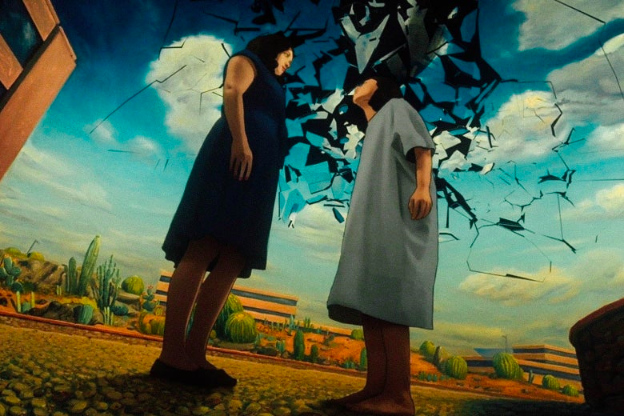By Danielle Rice || Arts & Leisure Editor

The first of its kind, Undone is a short, eight-episode animated television series that was released by Amazon Prime Video on September 13. Geared toward adults, the show centers around Alma, a funny, sarcastic, yet particularly insightful character. Alma comes “undone” when she gets into a car accident – the opening scene – and starts seeing her dead father, who helps her learn to time travel in order to track down his killer. It incorporates aspects of science fiction into drama and comedy with great writing and character development.
Although the plot is exciting, what really made this series for me was Alma’s character. Living with her long-term boyfriend and working at a daycare center, she questions whether there is more to life than just “this.” We meet her younger sister, who is getting married. As the episodes progress, we learn that both Alma and her sister fear that they are “broken people.” This is part of the reason Alma gets invested in finding out what happened to her father. She feels that if she can go back in time and prevent her father’s death, she would end up a better person, with a complete family. However, we learn that Alma has a family history of schizophrenia, and while she and the viewer get transported through time and see her father, her overbearing mother and sister simply believe that she is hallucinating due to her mental illness.
Throughout the series, the viewer gets to experience Alma’s exact point of view – everything she sees and hears. Even though it’s never explicitly said, we learn that she is deaf, but hears through a cochlear implant. When she doesn’t have it in, we just hear muffled noises. We are so inclined to trust Alma because we experience everything alongside her.
The meticulous animation process that went into the making of these eight episodes is what makes it entirely unique. The creators used rotoscope animation, which involves drawing over live-action filming to create animated versions of each actor. This is the first time rotoscope animation has been used in a television series. Although they are clearly animated, the characters have such distinct facial features of the actors that play them that you question whether they are real or animated. This adds to the dream-like state of the show where things happen that don’t seem possible. In addition to rotoscope animation, the backdrops are created using oil painting on canvas, which are digitally added to the scenes. In the end, a product is created that is a blend of live acting, animation, and oil paintings. This allows things to happen in the series that would never normally be possible, such as the sky breaking open or scenes switching very rapidly.
When I was watching this series, I tried to spread the episodes out, but I ended up finishing the whole season in two sittings and was left yearning for more episodes. I would recommend this series to anyone who is a fan of drama, comedy, science fiction, or anyone just looking for a fun new show to check out.
Sophomore Danielle Rice is the Arts & Leisure Editor. Her email is drice1@fandm.edu.